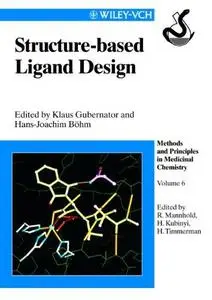Structure-Based Ligand Design By
1998 | 159 Pages | ISBN: 3527293434 | PDF | 7 MB
1998 | 159 Pages | ISBN: 3527293434 | PDF | 7 MB
Most drugs bind to a clearly defined macromolecular target that is complementary in terms of structure and chemistry. This observation is the basic paradigm of structure-based ligand design. Although this method first emerged in the 1980s, it has already become a powerful tool for pharmaceutical research. Much has been learned, however, since the first attempts to discover drugs on the basis of available biochemical and structural data. Nowadays, structure-based ligand design is an established method for creating drugs with new structural features, for modifying binding activities and pharmacokinetic properties, and for elucidating binding modes and structure-activity relationships. This volume presents the underlying principles of the approach and highlights real-life applications such as the discovery of HIV-protease inhibitors. It shows that structure-based ligand design has many advantages over other more traditional approaches to designing new drugs, providing it is employed properly and with a thorough knowledge of the pitfalls to avoid. The straightforward presentation and extensive list of references to the original literature as well as numerous color figures illustrating structural relationships make this volume an indispensable tool for every scientist working in the area of drug discovery. Content: Chapter 1 Rational Design of Bioactive Molecules (pages 1–13): K. Gubernator and H.?J. BohmChapter 2 Examples of Active Areas of Structure Based?Design (pages 15–36): K. Gubernator and H.?J. BohmChapter 3 Structure?Based Design: From Renin to HIV?1 Protease (pages 37–71): Elizabeth A. Lunney and Christine HumbletChapter 4 Zinc Endoproteases: A Structural Superfamily (pages 73–88): N. BorkakotiChapter 5 Structure?Based Design of Potent Beta?Lactamase Inhibitors (pages 89–103): K. Gubernator, I. Heinze?Krauss, P. Angehrn, R. L. Charnas, C. Hubschwerlen, C. Oefner, M.G.P. Page and F. K. WinklerChapter 6 Inhibition of Sialidase (pages 105–119): Neil R. TaylorChapter 7 Rational Design of Inhibitors of HIV?1 Reverse Transcriptase (pages 121–127): Wolfgang SchaferChapter 8 New Computational Approaches to Predict Protein?Ligand Interactions (pages 129–142): Hans?Joachim BohmChapter 9 The Future of Structure?Based Design: A Worthy Precept? (pages 143–147): H.?J. Bohm and K. Gubernator



